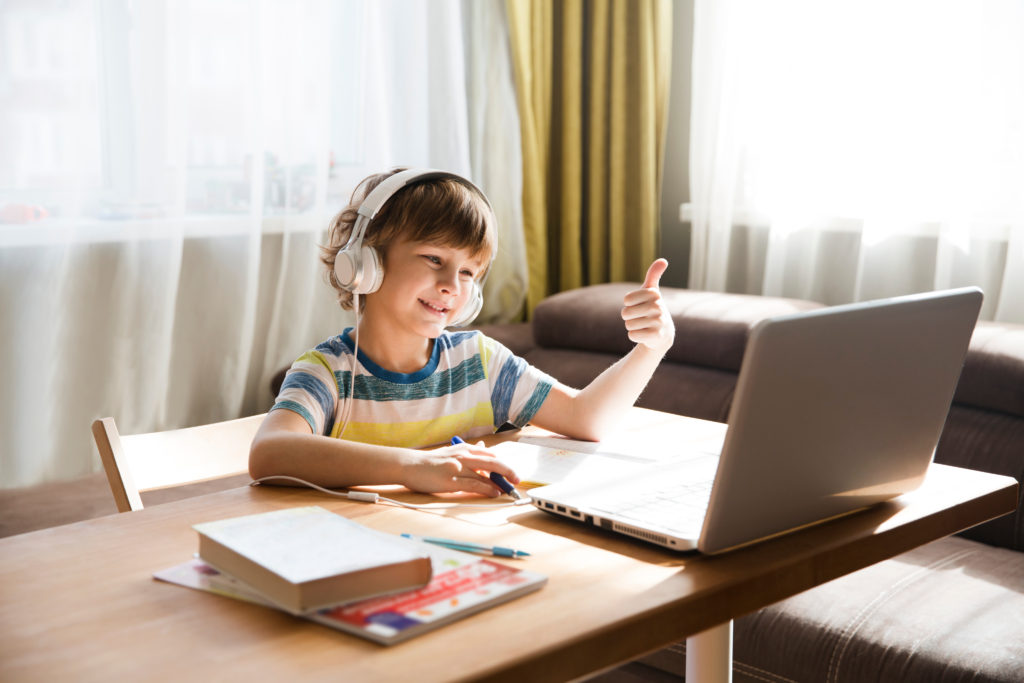For most mental health providers, the COVID-era transition from in-person sessions to virtual ones was a challenge, even for those with clients who had ready access to broadband internet. Communicating through a computer or cell phone does not come second nature to all, especially when your client is five years old.
When the world shut down in spring 2020, that was the reality for the mental health clinicians at ChildSavers. The Richmond nonprofit, which specializes in working with children who have experienced trauma – physical or sexual abuse, in-school or at-home violence, sudden loss of a loved one or even the impact of a pandemic – found itself hurtling toward a new paradigm of care, and its staff was not without its share of trepidations.

“I remember thinking, ‘this is kind of scary,’” recalls Lauren Cave, LCSW, CSOTP, a clinician at ChildSavers with more than seven years of experience. “But I knew I needed to just push that aside and make it work because I knew that the kids needed it [the therapy].”
Then came the first telehealth session with a five-year-old boy who ended up making the perfect first client for this transition to online therapy. Why? Because, she remembers, “he had tons of toys.”
“Having toys to play with during our first virtual session allowed [my client] to express his feelings and engage with me over the screen. He treated me like I was still in the room,” said Cave.
Play therapy is the foundation for counseling children. They express themselves through play, and doing so gives them an authentic and safe outlet for their emotions. When kids come into a ChildSavers office – whether its headquarters building or in one of their satellite offices in a public school – they’ll find plenty of toys to grab their attention. But their home environment was more of a mystery, and Lauren and her colleagues were unsure what kind of resources would be available for their sessions.
When toys are available, clinicians give the kids the space to play with them. Leading up to some sessions, Lauren will put together a box filled with toys and other items and have it sent to the child’s home, and they know this box is designated for their appointments with “Miss Lauren.” It makes their time special and something the kids look forward to.
Rather than being more restrictive, Lauren has found that telehealth provides opportunities to get more creative. She’ll not only introduce some web-based games into sessions, but she engages them in games that they could not play at her office.
“I might say, ‘hey, we’re going to practice being a spy, and you’re going to take your phone around the house, and oh, there’s your brother. That means you have to get on the ground and sneak and be really quiet,’” she explains. “I’ll use the distracted wandering to my advantage to practice self-regulation in a fun way.”
The objective, Lauren says, is that you have to “meet kids where they are,” and that means being really flexible, which she says is one of the keys to being effective.
Teletherapy also has helped in another critical area – parent involvement.
“One of the things I’ve seen with telehealth that’s made some of the effectiveness more powerful has been more family engagement,” Lauren says. “Typically, one parent brings the child to the clinic, but over telehealth, I can meet with both parents because they’re in the home together, and we can have a pretty good family session where we actually can talk about what needs to be talked about. And it helps me see the backgrounds of the children and help them come up with actual solutions that work for the environment they’re in.”
All of which goes to prove that the best place to “meet kids where they are” might just be where they live.

